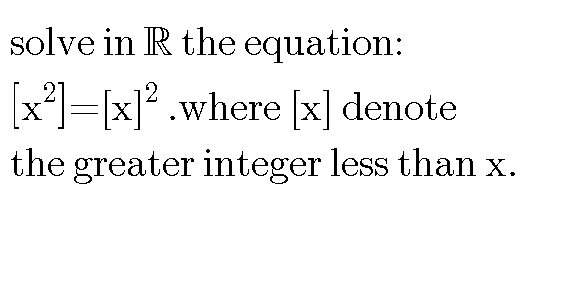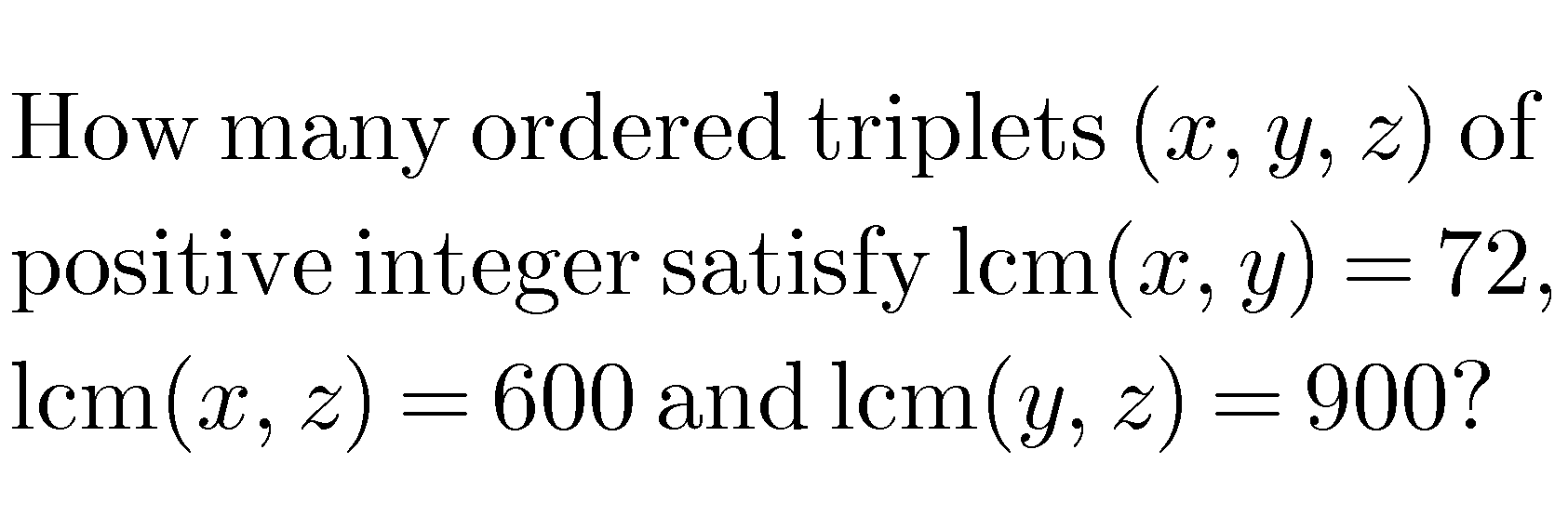
Question and Answers Forum
Number TheoryQuestion and Answers: Page 19


|
Question and Answers Forum |
Number TheoryQuestion and Answers: Page 19 |
| a and b are distinct primes and x,y∈{0,1,2,...}. What is the number of divisors common to the numbers (a^x b^y ) and (a^y b^x )? |
| If N is perfect nth power, prove that n ∣ (d(N)−1) [Where d(N) denotes number of divisors of N] Also show by an example that its vice versa is not necessarily correct. |
| If the number of divisors of a number is odd,prove that the number is perfect square and vice versa. |
| (1).the mean of 14.9.22.14.22.18 |
| 2.8.4.7.8.6.16−what next number |
| Try to write new year number (2018)as: (i) Sum of two primes (ii)Sum of three primes (iii)Sum of primes (iv)Sum of as many distinct primes as possible. |
| A={(m/n)+((8n)/m) : m, n ∈ N}, N= Natural numbers find sup(A) and inf(A) |
| If GCD(a,b) = 1 and GCD(c, d) = 1 a ≠ b ≠ c ≠ d ≠ 1, a < b, c < d is it possible that (a/b) + (c/d) is an integer number? |
| What is the real part and imaginary part of the complex number: z = (1 + i)^i |

|
| Find the minimum possible least common multiple (lcm) of twenty (not necessarily distinct) natural numbers whose sum is 801. |
| Find the last 2 digits from 20^(17) + 17^(20) |
| Prove that 3k+2 is not perfect square for all k∈{0,1,2,3,...}. |
| (∣m^2 −n^2 ∣,2mn,m^2 +n^2 ) is pythagorean triplet for all m,n∈N. This can be proved easily.Is the vice versa of the statement is also true? I-E If for a,b,c∈N ,a^2 +b^2 =c^2 then there exist m,n∈N such that m^2 +n^2 =c and {a,b}={∣m^2 −n^2 ∣,2mn} |
| For each positive integer n, define a_n =20+n^2 ,and d_n =gcd(a_n ,a_(n+2) ). Find the set of all values that are taken by d_n . |
| For each positive integer n define a_n =30+n^2 ,and d_n =gcd(a_n ,a_(n+1) ). Find the set of all values that are taken by d_n and show by examples that each of these values are attained. |

|
| Given a^2 + b^2 = 1 and c^2 + d^2 = 1 The minimum value of ac + bd − 2 is ... |
| Given any positive integer n show that there are two positive rational numbers a and b, a ≠ b, which are not integers and which are such that a − b, a^2 − b^2 , a^3 − b^3 , ....., a^n − b^n are all integers. |
| Suppose N is an n-digit positive integer such that (a) all the n-digits are distinct; and (b) the sum of any three consecutive digits is divisible by 5. Prove that n is at most 6. Further, show that starting with any digit one can find a six-digit number with these properties. |
| Let A be a set of 16 positive integers with the property that the product of any two distinct numbers of A will not exceed 1994. Show that there are two numbers a and b in A which are not relatively prime. |
| Prove that the product for all nth roots of unity is equal to zero, except n=1. Note: U_n ={e^(2kπi/n) ∣ k∈{1, 2, ..., n}} x^n =1 |
| Call a positive integer n good if there are n integers, positive or negative, and not necessarily distinct, such that their sum and product are both equal to n (e.g. 8 is good since 8=4∙2∙1∙1∙1∙1(−1)(−1)=4+2+1+1+1 +1+(−1)+(−1)). Show that integers of the form 4k + 1 (k ≥ 0) and 4l (l ≥ 2) are good. |
| Which is greater 10^(11) or 11^(10) ? |
| Prove that the ten′s digit of any power of 3 is even. [e.g. the ten′s digit of 3^6 = 729 is 2]. |
| Prove that 1 < (1/(1001)) + (1/(1002)) + (1/(1003)) + ... + (1/(3001)) < 1(1/3). |